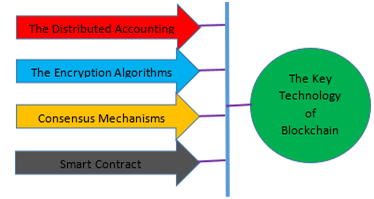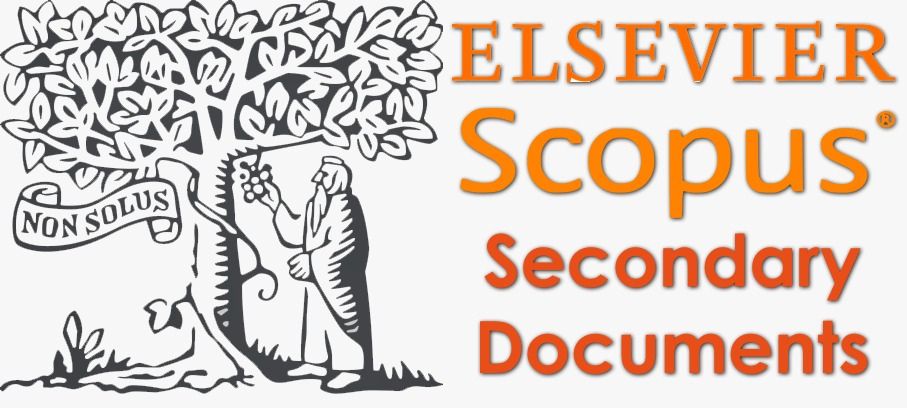BLOCKCHAIN ADOPTION: APPLICATIONS AND CHALLENGES
DOI:
https://doi.org/10.15282/ijsecs.7.2.2021.3.0086Keywords:
Blockchain, Bitcoin, Distributed Ledger Systems, Hash, Data StructureAbstract
In recent times, more scholastic and social attention have been paid to blockchain and its distributed ledger system mechanism. The reasons for this ever-increasing attention cannot be far-fetched: blockchain now occupies a copious position in the present-day ways of doing things economically, digitally and ‘digital-socially’. Blockchain could be described as a distributed ledger system that allows secure transactions without a central management system. In this distributed ledger system, transactions are coded into blocks, which are linked to each other in the form of a chain. The first application of blockchain is in the bitcoin cryptocurrency. Though not limited to bitcoin, blockchain finds usefulness in security and trusts for instance, digital assets could be coded into blocks to ensure and enforce quality of trust. Consequent upon the quality of trust the blockchain confers on a digital asset, transparency among participating nodes is guaranteed. This is because, any change made to any record in a given block automatically initiates and enforces a corresponding change in all other blocks in the chain hence tampering or breach is almost impossible. Owing to its impressive prospects in the socioeconomic and political ecosystem, this paper was conceived to examine the current developments around this novel technology with particular emphasis on its benefits and proposed challenges and needs to fill the gap created in the vital socioeconomic domains. The paper concludes that the blockchain technology is a plausible approach to restoring the trust, confidentiality, availability and integrity in transactions in the cyberspace and the world at large as majority of the global economy thrives in the cloud.
References
F. Casino, T. K Dasaklis, and C. Patsakis “A systematic literature review of blockchain-based applications: Current status,
classification and open issues”. Telematics and Informatics, 2019,. 36, pp.55-81.
A. Collomb and K. Sok “Blockchain/distributed ledger technology (DLT): What impact on the financial sector?” Digiworld
Economic Journal, 2016,. (103).
X. Pan, X. Pan, M. Song, B. Ai, and Y. Ming, “Blockchain technology and enterprise operational capabilities: An empirical
test”. International Journal of Information Management, 2020, 52, p.101946
F. Dai, Y. Shi, N. Meng, L. Wei, and Z. Ye “From Bitcoin to cybersecurity: A comparative study of blockchain application
and security issues”. In 2017 4th International Conference on Systems and Informatics (ICSAI) November 2017,. (pp. 975-
. IEEE.
P. W. Abreu, M. Aparicio, and C. J Costa “Blockchain technology in the auditing environment”. In 2018 13th Iberian
Conference on Information Systems and Technologies (CISTI) June 2018,. (pp. 1-6). IEEE.
J. L. Zhao, S. Fan and J. Yan “Overview of business innovations and research opportunities and blockchain and introduction
to the special issue (2016)”: 1-7
I. Riabi, H. K. B Ayed, and L. A. Saidane “A survey on Blockchain based access control for internet of Things. In 2019
th International Wireless Communications & Mobile Computing Conference(IWCMC) June 2019,. (pp. 502-507) IEEE
G. Zyskind, O. Nathan, and A. Pentland. Enigma: Decentralized computation platform with guaranteed Privacy (2015),.
arXiv preprint arXiv:1506.03471
G. Paul,P. Sarkar, and S. Mukherjee. “Towards a more democratic mining in bitcoins”. In International Conference on
Information Systems Security. December 2014,. (pp. 185-203). Springer, Cham.
J. Li, and X. Wang “Research on the application of blockchain in the traceability system of agricultural products”. In 2018
nd IEEE Advanced Information Management, Communicates, Electronic and Automation Control Conference
(IMCEC) May 2018,. (pp. 2637-2640). IEEE.
R. C. Global “Blockchain for Traceability in Minerals and Metals Supply Chains: Opportunities and Challenges” Self
published. 2017,.1(1): p1-21.
D. Aliu, S. M. Shaba, M. O. Momoh, P. U Chinedu and W. Nwankwo “A Computer Security System for Cloud Computing
Based on Encryption Technique” Computer Engineering and Applications 10(1), February 2021,. (pp. 41-54).
S. Underwoo. Beyond Bitcoin. Commun. ACM 59, October 2016,. (15-17)
I. K. Lim, Y. H. Kim, J. G. Lee, J. P Lee, H. Nam-Gung and J. K. Lee. “ The Analysis and Countermeasure on Security
breaches of Bitcoin”. In International Conference on Computational Science and Its Applications. Springer International
publishing 2014,. (pp. 720-732)
I. Eyal and E. G. Sirer, “Majority is not enough: Bitcoin mining is vulnerable,” In Financial Cryptography and Data Security:
th International Conference. Springer Berlin Heidelberg, 2014,. pp. 436– 454.
A. Sapirshtein, Y. Sompolinsky, and A. Zohar, “Optimal selfish mining strategies in bitcoin,” In Financial Cryptography
and Data Security: 20th International Conference, FC 2016, Christ Church, Barbados,February 22–26, 2016. Springer Berlin
Heidelberg, 2017,. pp. 515–532.
K. Nayak, S. Kumar, A. Miller, and E. Shi, “Stubborn mining:Generalizing selfish mining and combining with an eclipse
attack,” In 2016 IEEE European Symposium on Security and Privacy (EuroS P), 2016, pp. 305–320.
P. T. Duy, D. T. T. Hien, D. H. Hien, and V. H. Pham “A survey on opportunities and challenges of Blockchain technology
adoption for revolutionary innovation”. In Proceedings of the Ninth International Symposium on Information and
Communication Technology December 2018,. (pp. 200-207).
X. M. Yang, X. Li, H. Q. Wu, and K. Y. Zhao. “The application model and challenges of blockchain technology in
education”. Modern distance education research 2017,. 2, pp.34-45.
A. Muneeza, N. A. Arshad, and A. T Arifin “The application of blockchain technology in crowdfunding: towards financial
inclusion via technology”. International journal of management and applied research, 5(2), 2018,. pp.82-98.
T. Dogru, M. Mody, and C. Leonardi “Blockchain technology & its implications for the Hospitality Industry”. Boston
University 2018.
E. M. Dogo, A. F. Salami, N. I. Nwulu, and C. O. Aigbavboa. Blockchain and internet of things- based technologies for
intelligent water management system. In Artificial intelligence in IoT 2019,. (pp. 129-150). Springer, Cham.
A. I. Sanka, and R.C. Cheung “Blockchain: Panacea for Corrupt Practices in Developing Countries”. In 2019 2nd
International Conference of the IEEE Nigeria Computer Chapter (NigeriaComputConf) October 2019,. (pp. 1-7). IEEE.
R. Neisse, J. L. Hernández-Ramos, S. N. Matheu, G. Baldini, and A. Skarmeta, “Toward a blockchain-based platform to
manage cybersecurity certification of IoT devices”. In 2019 IEEE Conference on Standards for Communications and
Networking (CSCN) ) October 2019,. (pp. 1-6). IEEE
A. I. Sankaa, M. Irfana, Huangb, I. and R. C. Cheunga. “A Survey of Breakthrough in Blockchain Technology: Adoptions,
Applications, Challenges and Future Research”. Telematics and Informatics 36, 2019,. p55-81.
Z. Zheng, S. Xie, H. N. Dai, X. Chen and H. Wang, “ Blockchain Challenges and Opportunities: A Survey”. International
Journal of Web and Grid Services, 2018,. 14 (4), pp 352-375
J. Barcelo, (2014) User Privacy in the Public Bitcoin Blockchain.
A. Biryukov, D. Khovratovich, and I. Pustogarov. (2014) “Deanonymisation of clients in bitcoin p2p network”, Proceedings
of the 2014 ACM SIGSAC Conference on Computer and Communications Security, New York, NY, USA, pp.15–29
X. Pan, X. Pan, M. Song, B. Ai, and Y. Ming. “Blockchain technology and enterprise operational capabilities: An empirical
test”. International Journal of Information Management, 2020, 52 (3), p.101946
J. Wu and N. K. Tran. Application of blockchain technology in sustainable energy systems: An
overview. Sustainability, October 2018. 10(9), p1-22
K.A. Britt,and T.S. Humble."High-Performance Computing with Quantum Processing Units". ACM J. Emerg. Technol.
Comput. Syst.,2017,. 1, 1, Article 1, PP.1-13.
W. Nwankwo, A.S. Olayinka, K.E. Ukhurebor. "Green Computing Policies and Regulations: A Necessity?". International
Journal of Scientific and Technology Research, 2020,. 9(1).
W. Nwankwo, and K.E. Ukhurebor. "Data Centres: A Prescriptive Model for Green and Eco-Friendly Environment in the
Cement Industry in Nigeria". International Journal of Scientific and Technology Research, 2020,. 9(5), pp. 239-244
W. Nwankwo, and U.P. Chinedu."Green Computing: A Machinery for Sustainable Development in the Post-Covid Era". In
Albert Sabban(Ed.), Green Technologies and Computing Industry. IntechOpen, United Kingdom, 2020.

Downloads
Published
Issue
Section
License
Copyright (c) 2021 Muyideen Omuya Momoh, P.U. Chinedu, W. Nwankwo, D. Aliu, M.S. Shaba

This work is licensed under a Creative Commons Attribution-NonCommercial 4.0 International License.






